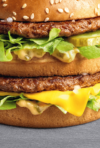A foodie to foodie conversation: on creating visual feasts, favourite production stages and tabletop, in the era of social media. Alberto Arellano, a Navarre-born filmmaker, with a focus on storytelling and a multidisciplinary approach; dishes out a tasty talk with Robert Payton- a passionate film director with 20 years of experience.

Robert: Where are you at the moment Alberto?
Alberto: I’m in my hometown – Navarra… It’s in the northern part of Spain. I wanted to say that I’m based here, because recently I became a father – but it was 4 years ago (Alberto and Rob laugh).
Before that, I was living in Oslo, and before that, I studied and lived in Barcelona. I think the time in Barcelona was my ‘key’ moment… you know? First I started studying engineering, then I moved my little brain to study film and audio.
R: And where did the desire to film food come from? Culturally, You grew up in a food region. Navarra is a gastronomic centre. Was food an important part of your family culture?
A: Absolutely. I think food is impregnated in everything. I’m so passionate about it. For this reason I think I enjoy my job a lot. I consider food a vehicle to articulate stories.
My grandfather was a farmer – he cultivated vegetables to sell – and I have great memories of that. They awaken, depending on the season. I remember special vegetables for winter, special vegetables for spring and special vegetables for summer. I feel bold about them.. Here in the south of Navarra, the vegetables are the stars – vegetables, wines and olive oil. Oh – and chistorra – it’s similar to chorizo, but it’s sweeter and I really love it.
Later on, I found a way to communicate stories via food. It’s a versatile element to transmit emotions and messages.
R: Olives – yes I remember one of your early works was about olives. It was almost like a complete olive feast. I saw the commercial and you used what looked like a borescope; and it took the audience on a journey across the table around every kind of olive.
A: Exactly. In the beginning, the brief was just to show the ‘Longest table in the world‘ from overhead.
To me, it seemed a bit monotonous for 30 seconds, to see the same perspective. In our job, I really love to take on the challenges; so I decided to go traveling overhead first. Then, in the next shots, introduce extreme close-up and camera movement; with the borescope too. I wanted to give a feeling of two different perspectives. On one hand like a graphical narrative view and on the other hand more sensitive; creating a more dynamic storytelling. So, you have the product, the story and you also have the flavours.

